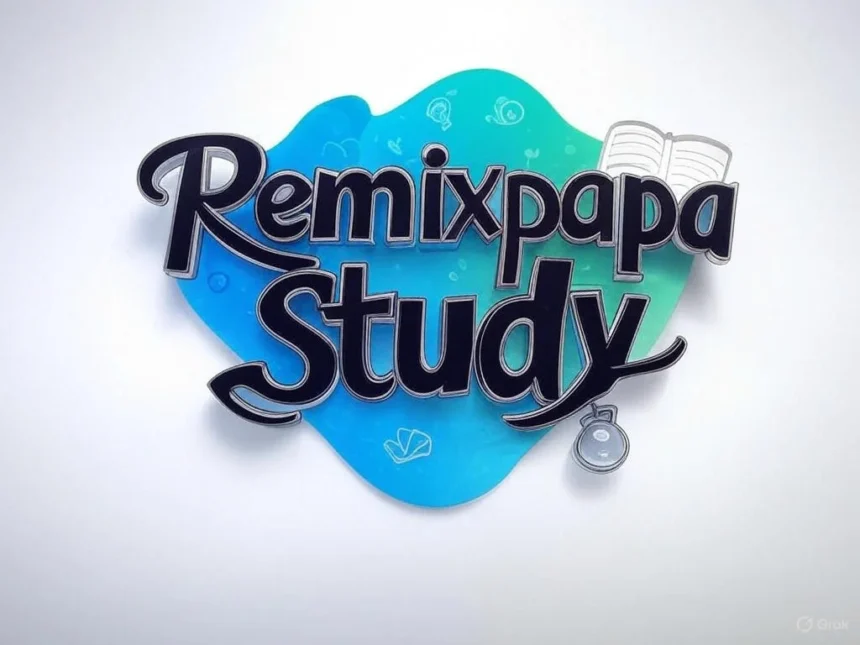Introduction
The landscape of education is constantly evolving, driven by innovative approaches that challenge traditional methodologies. Among these, the Remixpapa study has emerged as a transformative force, redefining how students engage with learning materials and how educators design curricula. This article explores the origins, methodologies, and impacts of the Remixpapa study, highlighting its significance in fostering creativity, collaboration, and critical thinking in modern education. By examining its principles and real-world applications, we aim to understand why the Remixpapa study is reshaping educational paradigms worldwide.
Origins of the Remixpapa Study
The Remixpapa study began as an experimental approach to learning, rooted in the concept of remixing taking existing resources, ideas, or content and reconfiguring them to create something new. Originating in the early 2020s, it was inspired by the digital culture of remixing music, videos, and art, where creators build upon others’ work to produce innovative outputs. Educators and researchers recognized that this creative process could be applied to learning, allowing students to engage with knowledge in dynamic ways.
The Remixpapa study draws from constructivist theories, which emphasize that learners construct knowledge through experience and interaction. By encouraging students to remix educational content such as texts, multimedia, or datasets the approach fosters a deeper understanding of subjects. For instance, a history student might remix primary sources into a digital narrative, combining text, images, and audio to present a unique perspective on a historical event. This method not only enhances engagement but also promotes ownership of the learning process.
Core Principles of the Remixpapa Study
The Remixpapa study is built on several key principles that distinguish it from traditional educational models:
Creativity and Innovation: Students are encouraged to think outside the box, using existing materials as a foundation for original creations. This approach nurtures creative problem-solving skills essential for the 21st century.
Collaboration: Remixing often involves working with peers, sharing ideas, and building on each other’s contributions. This collaborative aspect mirrors real-world professional environments.
Critical Thinking: By analyzing and reinterpreting content, students develop critical thinking skills, questioning assumptions and exploring multiple perspectives.
Technology Integration: The Remixpapa study leverages digital tools, such as video editing software, data visualization platforms, and content management systems, to facilitate remixing.
Inclusivity: The approach allows students from diverse backgrounds to bring their unique experiences into the learning process, creating a more inclusive educational environment.
These principles align with the demands of a rapidly changing world, where adaptability and innovation are critical for success.
Methodology and Implementation
Implementing the Remixpapa study in classrooms involves a structured yet flexible methodology. Educators begin by selecting a core set of materials texts, videos, datasets, or other resources relevant to the subject matter. Students are then tasked with remixing these materials to create a new product, such as a multimedia presentation, a revised narrative, or a data-driven argument.
For example, in a literature class, students might remix a classic novel by creating a modern adaptation, incorporating contemporary themes and digital media. In a science class, they could remix experimental data to propose new hypotheses or visualizations. The process typically follows these steps:
-
Analysis: Students analyze the original materials, identifying key themes, arguments, or data points.
-
Deconstruction: They break down the content into components, such as text, visuals, or datasets.
-
Reconstruction: Using digital tools, students recombine these components with their own ideas, creating a new artifact.
-
Reflection: Students reflect on their process, articulating how their remix contributes to the subject’s understanding.
This methodology encourages active learning, as students are not passive recipients of information but active creators of knowledge.
Impact on Student Engagement
One of the most significant impacts of the Remixpapa study is its ability to boost student engagement. Traditional education often relies on rote memorization or standardized assessments, which can disengage learners. In contrast, the remixing process taps into students’ creativity, making learning more enjoyable and meaningful.
Studies have shown that students participating in Remixpapa study-based programs report higher levels of motivation and satisfaction. For instance, a 2023 study found that students who engaged in remixing projects were 30% more likely to complete assignments on time compared to those in traditional settings. By allowing students to express themselves through creative outputs, the approach fosters a sense of agency and purpose. Moreover, the Remixpapa study appeals to diverse learning styles. Visual learners benefit from creating multimedia projects, while analytical learners excel at deconstructing and reconstructing data. This inclusivity ensures that all students can find a pathway to success.
Enhancing Critical Thinking and Collaboration
Beyond engagement, the Remixpapa study significantly enhances critical thinking and collaboration skills. By remixing content, students must evaluate the quality and relevance of source materials, question biases, and make informed decisions about how to present their ideas. This process mirrors the critical thinking required in professional fields like journalism, design, and research.
Collaboration is another cornerstone of the approach. Remixing projects often require students to work in teams, sharing resources and feedback. This mirrors real-world scenarios where professionals collaborate across disciplines to solve complex problems. For example, a group of students might remix a dataset on climate change, with each member contributing expertise in data analysis, graphic design, or narrative writing. Such projects teach students how to communicate effectively, resolve conflicts, and value diverse perspectives.
Challenges and Criticisms
Despite its benefits, the Remixpapa study is not without challenges. One criticism is the potential for superficial remixing, where students produce derivative work without deep engagement. To address this, educators must provide clear guidelines and scaffold the remixing process, ensuring that students critically analyze and add value to the original content.
Another challenge is the reliance on technology, which can create inequities in schools with limited resources. While digital tools are integral to the Remixpapa study, educators can adapt the approach using low-tech alternatives, such as paper-based remixing or group discussions. Professional development for teachers is also crucial, as many may lack the skills to implement this innovative approach effectively. Finally, assessing remixed projects can be complex, as traditional grading rubrics may not capture the creativity and originality of the work. Educators are encouraged to develop flexible assessment criteria that value process, innovation, and critical thinking alongside content mastery.
Case Studies: Remixpapa Study in Action
To illustrate the real-world impact of the Remixpapa study, consider the following case studies:
-
High School History Class: A teacher in California implemented the Remixpapa study by asking students to remix primary sources from the Civil Rights Movement. Students created digital timelines, podcasts, and short films, combining historical documents with modern commentary. The project not only deepened students’ understanding of the era but also sparked discussions about contemporary social justice issues.
-
University Science Course: A professor at a Canadian university used the Remixpapa study to teach environmental science. Students remixed climate data into interactive visualizations, proposing policy solutions based on their findings. The project was presented at a regional conference, earning praise for its innovation and rigor.
-
Middle School Literature Program: In a UK middle school, students remixed Shakespeare’s Romeo and Juliet into a graphic novel set in a futuristic dystopia. The project encouraged students to explore themes of love and conflict in a new context, fostering a deeper appreciation for the text.
These examples demonstrate the versatility of the Remixpapa study across subjects and age groups, highlighting its potential to transform education.
The Future of Remixpapa Study
As education continues to evolve, the Remixpapa study is poised to play a central role in shaping future pedagogies. Advances in artificial intelligence and digital platforms will likely enhance the remixing process, offering students new tools to create and share their work. For instance, AI-driven content analysis could help students identify biases in source materials, while virtual reality could enable immersive remixing experiences.
Furthermore, the Remixpapa study aligns with the growing emphasis on skills-based education. Employers increasingly value creativity, collaboration, and adaptability skills that the remixing process cultivates. By preparing students for a dynamic workforce, the approach bridges the gap between education and real-world demands. However, scaling the Remixpapa study will require investment in teacher training, technology infrastructure, and curriculum development. Policymakers and educators must work together to ensure that all students, regardless of socioeconomic background, have access to this transformative approach.
Conclusion
The Remixpapa study represents a bold step forward in education, harnessing the power of creativity, collaboration, and technology to engage students and prepare them for the future. By allowing learners to remix content in innovative ways, it fosters critical thinking, inclusivity, and a passion for learning. While challenges remain, the approach’s flexibility and adaptability make it a viable solution for diverse educational contexts. As schools and universities continue to embrace the Remixpapa study, it will undoubtedly leave a lasting impact on how we teach and learn, empowering students to become active creators of knowledge in an ever-changing world.







